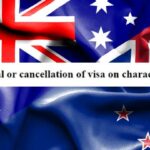Should Returning Terrorism Suspects be Forced to Wear Tracking Devices?

It has been suggested terrorism suspects returning from overseas terrorist hot-spots should be forced to wear tracking devices for at least two years if they remain in the community when they return to Australia.
Fitting such a device on an ordinary citizen in similar circumstances might be considered a significant breach of civil rights.
But to many, times have changed and the threat of terrorism calls for unusual measures to be implemented.
We recently published an article asking the question: What should happen to returning Jihadist?.
Many expressed outrage at the idea of dealing leniently with such people, advocating the revocation of passports, life imprisonment and even torture, shootings, live burials, family massacres and beheadings.
But foreign Minister Julia Bishop has now reportedly announced that the government has cancelled the passports of 80 suspected foreign fighters.
And those who are able to return could face lengthy prison sentences.
But what should we do if those returning are in the community without being charged with an offence or, if they are charged, are released on bail whilst awaiting their court date?
Is the compulsory fitting of tracking devices the answer?
Perhaps surprisingly, the idea has garnered support from former terror suspect Zaky Mallah, who believes that tracking devices would work.
He was charged with terrorism-offences in 2003 and ultimately acquitted of those charges, although he was convicted of threatening violence against Commonwealth officials.
Mallah was forced to wear a device in 2007.
He found it so frustrating that he considered prison to be more tolerable.
Current laws already allow for terror suspects to be fitted with tracking devices for up to 12 months in certain limited circumstances.
Those circumstances are contained in section 104 of the Criminal Code Act 1995 (Cth) which regulates ‘control orders’
What is a control order and when can it be used?
People suspected of planning terrorist attacks may be subjected to obligations, prohibitions and restrictions on their conduct through the use of control orders.
In order to obtain a control order, police must obtain the Attorney-General’s consent to make an application to the court, and the court must then be satisfied on the ‘balance of probabilities’ (ie more than 50%) that:
- The order would substantially assist in preventing a terrorist act;
- The person has provided training, received training or participated in training with a terrorist organisation;
- That person has engaged in a hostile activity in a foreign country;
- The person has been convicted in Australia of an offence relating to terrorism, a terrorist organisation or a terrorist act; or
- The person has been convicted in a foreign country of an offence that, if the trial had been held in Australia, would constitute a terrorism offence
The Australian government lists the groups that are considered to be terrorist organisations – 20+ groups are currently listed. Helping or supporting them is also an offence.
What kind of things can a control order do?
Control orders can be very restrictive.
They can be used to prevent a person from being in, or leaving, particular areas.
They may also require a person to stay at specified premises between specific times or on specific days and force them to wear a tracking device.
They can forbid a person from communicating with other specified individuals and from using the Internet, telephones or other forms of technology.
They may order the person to be photographed and/or fingerprinted, to attend counselling or education sessions, or comply with a range of other directions.
A court is required to consider the person’s personal circumstances before placing them under a control order and imposing conditions.
Are they necessary?
Tracking devices are very invasive, but some believe they are necessary to monitor a potential threat.
Professor Clive Williams from the Centre for Policing, Intelligence and Counter Terrorism, argues that the tracking technology which is used monitor alleged sex offenders could also help.
But keeping tabs on all people listed on “watch lists” isn’t always easy, particularly when the lists are constantly growing
The US’s rapidly-expanding terror watch list has about one million people on it, and it is reported to include the names of 23 Australians.
One of the French terrorist attackers was on that list.
Within Australia, some have argued that even if Man Haron Monis was on Australia’s list, it would not necessarily have prevented the siege – although it might have reduced the chances.
Some have labeled the attacks in Paris and Sydney as “retail terrorism” – defined as smaller-scale attacks that can happen anywhere, at any time., with limited planning by a few with questionable, if any, links to terrorist organisations.
They have contrasted this with large-scale, highly-planned attacks like the 9/11 atrocity.
So-called “retail terrorism” can much more difficult to detect.
But Professor Clive Williams, a leading security expert, believes that for those returning from terrorism hot-spots, wearing tracking devices is an appropriate measure.
He believes it would be an efficient use of resources, as just one security person could monitor up to 20 suspects.
This is compared to close surveillance of a person which could require up to 20 people, and is therefore resource-intensive and expensive.
The devices are already being used to a greater extent in the UK and the US.
We’ll have to wait and see whether there will be a greater use of such devices in Australia.






